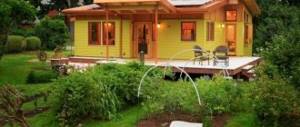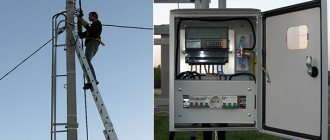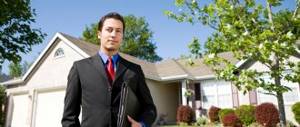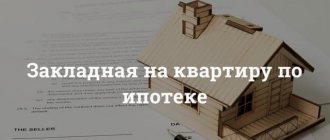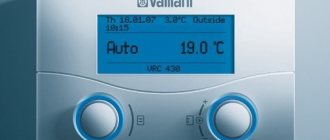- Home /
- Articles /
- Articles on inspection of buildings and structures /
- Noise level examination
An independent noise assessment is one of the main methods for assessing the indoor microclimate.
The survey will show you whether the level of sound loads corresponds to safe standards according to WHO, and, if necessary, will help bring troublemakers to justice. Noise is oscillatory movements of a chaotic order of sound waves of different strengths, measured in decibels (MPL 75-90 dB). There is a noise frequency range (from 0.5 Hz to 140 kHz) and a dynamic range (from 2.5 dB to 172 dB). For sounds (noise) to arise, it is enough to bring the physical body out of a state of rest. This can be car engines and electrical equipment drives during operation, the noise of water in pipelines, musical instruments, audio systems, etc. The sum of the factors results in the overall noise level, which affects the human body.
Why is noise level measured?
Noise is one of the irritating factors and, at critical levels, negatively affects human health. Noise level measurement is carried out:
- when inspecting private housing stock - when it is necessary to call noisy neighbors to account;
- in production - during certification of workplaces and their regular inspection;
- in vehicle interiors to create comfortable conditions for passengers;
- when developing and testing various equipment, household appliances;
- in public institutions, educational institutions and other organizations - to comply with environmental standards, etc.
Acoustic and vibration measurements
Noise is a set of sounds of varying frequency and intensity, which, when certain parameters are reached, begins to have a detrimental effect on the human body. Staying in a room where noise exceeds the maximum permissible standards not only reduces a person’s performance and attention, leading to injuries at work, but also affects his health - the cardiovascular, nervous and other systems of the body, and can lead to hearing loss.
We invite you to read: Property deduction when buying an apartment, how to apply, Deduction calculator in 2019
Noise standards
In residential areas the following noise standards are established by law:
- no more than 55 dB during the daytime;
- no more than 45 dB at night.
These are limit values that will not harm a person. In particular, sanitary standards for noise that is safe for humans are even lower:
- no more than 40 dB from 7 am to 11 am;
- no more than 30 dB from 11 am to 7 am.
Local authorities may vary noise limits slightly within the framework of current legislation, this must be taken into account if a noise level assessment is carried out to deal with “loud” neighbors. Many large cities impose separate conditions for performing noisy work on holidays, weekends and lunchtime. You can check regional standards with the Administration or with your local district police officer.
Exceeding the established noise levels causes physical harm to a person. Long-term exposure to sounds in the range of 70–90 dB can provoke diseases of the central nervous system; noise above 100 dB impairs hearing and can lead to complete deafness.
Noise measurement in apartments and residential buildings, vibration measurement
- from 7.00 to 23.00 – no higher than 40 dB;
- from 23.00 to 7.00 – no higher than 30 dB.
However, in everyday life, each of us is faced with additional sources of noise that have a harmful effect on the psyche and health in general.
- Laptop or PC – 40 dB;
- Washing machine – 68 dB;
- Noise outside the window (if the house is located next to a busy highway) – 70-80 dB;
- Refrigerator – 42 dB;
- Household drill or hammer drill – 100 dB.
As you can see, any modern person experiences increased noise pollution every day, but if additional factors are superimposed on it, it becomes dangerous.
We offer premises for individuals and legal entities for the type of noise research:
- Noise measurement – determining the level of noise emanating from equipment and other external and internal sources;
- Ultrasound measurement – checking the ultrasound level for compliance with standards.
- Determining the level of noise insulation protection of the room;
- Checking the noise level emanating from disturbing neighbors (you can use the expert opinion data in court);
- Measuring the noise level in the apartment and ultrasound emanating from specific objects (equipment, etc.).
Having received an expert opinion on the compliance or non-compliance of the noise level with the standards, you will be able to exclude this reason (if the noise level is normal) from among the factors causing psychosomatic disorders.
- Eliminating noise sources or using special noise-insulating structures will help optimize the work process;
- Identifying noise levels and taking appropriate measures to neutralize its sources will help create comfortable working conditions for employees or correctly develop work schedules in hazardous industries.
You can find prices for services for measuring and analyzing noise and ultrasound levels from our operators. Contact us and get more detailed advice on all aspects of our work that interest you.
Veterinary and sanitary examination Mold examination Ecological examination Air examination for harmful substances
Customer Reviews
We invite you to familiarize yourself with: Claim under a contract, warranty period
Name
Independent noise level assessment
Description
Noise level examination
If we talk about the first violation, then the violator will only receive a warning, but the second time he will have to pay an administrative fine, the amount of which may vary. It all depends on whether you are a legal entity, an individual or an official. For an individual, this amount will be 1,000 rubles, and for a legal entity it can reach 40,000 rubles.
Therefore, it is worth thinking several times before forcing your neighbors to conduct an examination to measure noise levels. After the second violation, neighbors may sue you in court or the prosecutor's office. This is an extreme case, but many people use it too. It may even come down to contacting the local municipality, which will force you to rectify the situation. If you do not do this, you may even be deprived of your housing and forced to pay compensation to the victims.
Examination of noise in the apartment
Noise measurements in an apartment must be performed in the same range (daytime or nighttime) at least 2-4 times. In this case, studies are carried out both with completely closed windows and with an open window. In parallel with the noise examination, you can additionally check the quality of sound insulation of partitions, window and door structures.
Stages of work:
- Collection and study of documentation for the object under study (title documents, technical passport, etc.);
- Taking measurements on site. The duration and level of sound, the dynamics of noise are recorded;
- Drawing up an expert opinion.
Based on this expert opinion, if there is a violation of sanitary standards, the home owner has the right to defend his rights in the Sanitary and Epidemiological Service, Rospotrebnadzor and even in court.
How to conduct a noise inspection?
One of the most popular and important services is the determination of noise and vibration levels in private houses, apartments, and new buildings.
Typically, a measurement consists of several sequential processes:
- The features of a house or apartment are studied - what the load-bearing walls are made of, on what floor the object under study is located, types of windows, etc.
- Special instruments (sound level meters, etc.) measure the sound pressure outside, from the street - from vehicles. For comparative analysis, the measurement is carried out first with the windows closed, and then with them open.
- The room is also examined for the presence of air exchange sources - these can be ventilation systems, air conditioners, etc.
- If necessary and if there are complaints, noise levels are measured at night.
- The operation of the refrigerator, ventilation systems, pumps and air conditioners in the apartment is assessed.
- If there are industrial or construction sites near a residential building, specialists measure the levels of vibration and noise emanating from them.
- After analyzing the results, the environmental specialist voices the conclusion and compliance of the noise level with standards, and gives practical recommendations.
We suggest you read: How to refinance a loan from Sberbank at a lower interest rate
The normal noise level is in the range from 25 to 30 dBA. A short stay in a noisy room, the sounds in which do not exceed 40–60 dBA, is considered acceptable, because it does not have a sharp negative effect on human health.
However, prolonged exposure to noise of 60 to 80 dBA or more can adversely affect the nervous system and hearing aid.
A noise examination is a kind of assessment of the human environment and the compliance of sounds with established standards and requirements. Measurements must be taken both indoors and outdoors. A qualified specialist uses a special device - a sound level meter.
Such equipment is quite expensive, so purchasing it for personal use is impractical. Cheap analogues are characterized by inaccuracy, which affects the final result. To obtain a legally binding report, the examination must be carried out by a licensed organization.
Research report
Noise measurement in an apartment, office or workplace is carried out in order to ensure comfortable living and working conditions. In enterprises, such issues are resolved by a labor protection engineer; in the private sector, homeowners must take care of themselves: the independent expert report is the main document in case of disagreements regarding noise levels.
Studies can be carried out both to determine background noise and to determine noise from a specific installation. During the inspection of the object, the expert conducts reconnaissance of the area and selects planned observation points. The specialist reflects the noise level results obtained at each point in a report, then compares them with the standards for the given facility. At the conclusion of the report, the expert summarizes the survey data and draws conclusions about the presence of excess noise standards or their compliance with generally accepted standards.
Objects of examination for determining noise levels
It is necessary to assess the background noise at objects for various purposes - these are residential buildings, educational institutions for schoolchildren and preschoolers, and medical and health institutions.
- In residential and office buildings, as well as industrial buildings, the overall noise level is measured, and sometimes the noise from a specific sound source, which leads to an increase in the overall noise level.
- In all types of public transport, the noise produced by a functioning engine is determined, as well as the noise that appears while the vehicle is moving.
- For workplaces, there are established restrictions on the permissible noise level, so here an examination is mandatory.
- In other places where high sound interference becomes an obstacle to the normal life, work and leisure of people.
If we talk about analyzing the noise produced by units, this could be computer equipment, home appliances and office equipment, musical and electrical instruments, a refrigerator and much more.
Noise examination in production
Noise can be mechanical, caused by the operation of equipment, and aerodynamic, resulting from the movement of liquid, air, steam, etc. Noise has a harmful effect on the human body and can cause occupational diseases - hearing loss. To combat noise, rooms in which noise-producing equipment is installed are covered with sound-absorbing material. Workers who service equipment that produces excessive noise are given special sound-absorbing headphones. To reduce sound vibrations of equipment, it must be adjusted and centered.
Noise measurements at workplaces are carried out at least once a year in accordance with Federal Law-52 and SN 2.2.4/2.1.8.562-96.
Author of the article: Head of the Department of Construction and Technical Expertise Doroshin A.S.
The procedure for conducting an examination to determine the noise level
A resident suffering from noise exposure must submit a complaint to Rospotrebnadzor, a sanitation authority, or an independent company.
Upon request from residents, specialists arrive with equipment called sound level meters.
There are special technologies, following which, experts take measurements at several points in the room, then display the average value and compare it with acceptable standard values.
The result of the experts’ work is a measurement protocol, which will indicate the frequency and dynamic noise levels. They can also check the effectiveness of sound insulation.
How to deal with violations?
Measuring the sound level and drawing up the appropriate document is the only real way to not only record, but also prove the fact of violation of established standards. When carrying out measurements, specialists use so-called sound level meters, instruments that record acoustic signals and measure their strength.
Measuring the noise level at industrial facilities can be carried out using the same methods and involves studying the operating characteristics of equipment, machines and mechanisms to determine their compliance with vibration noise exposure indicators that are safe for human health.
carries out measurement and measurement of noise levels in an apartment, and also provides prompt and effective control of noise levels in enterprises, organizations or private residential properties. All work is carried out in strict accordance with the law, with the provision of the necessary accompanying documents.
Noise level examination as evidence in court
The fact of the presence of noise impact on people while they are in the apartment can only be confirmed by an examination; all other arguments will remain unfounded, that is, unproven, and there will be nothing to present to the court.
An examination of the noise level in an apartment is a documentary basis for applying to the judicial authorities.
A sanitary and epidemiological examination may not always be carried out; there are circumstances that exclude the involvement of experts:
- when noises are caused by natural or random phenomena.
- The alarm system (anti-theft, fire, etc.) is causing concern.
- during cultural, sports, religious or political events.
- work is being carried out to eliminate the consequences of accidents, natural disasters, etc.
- inconvenience caused by traffic.
- grinding and rumbling noises are heard when removing ice and snow
- baby crying.
Expert actions will also be denied in the case where neighbors are making noise, since this falls within the competence of law enforcement agencies.
If you intend to go to court regarding violation of silence in your home or workplace, then contact the Bar Association No. 1, where our specialists will help you resolve this issue.
How are noise levels measured?
According to the standards established by Rospotrebnadzor, in the premises of residential buildings and individual houses and apartments, the determination of the sound source and the level of noise produced is regulated by certain standards that are relevant for daytime and nighttime. Moreover, depending on regional factors, these indicators may undergo certain changes. But the basic standards establish the following indicators within which noise measurements must be carried out:
- for daytime, the maximum permissible noise values should be 40 decibels - this corresponds to the noise of raindrops outside the window, that is, external stimuli should not penetrate the walls of a residential building and disturb others;
- at night, the maximum permissible noise level reaches 30 decibels - in fact, this means that you can engage in any type of activity, including listening to music, as long as they do not violate the established order.
Specialists from organizations that provide such services to the public can measure the level of noise that violates established standards of public order in residential premises.
Noise examination: instrumental studies of harmful factors
People strive to improve the quality of their lives and provide comfortable living conditions.
Changing habitual good norms can negatively affect the nervous system and human health. You have to either adapt to these conditions or solve problems using various methods, including going to court. To check whether fears for your health are justified, you can order an instrumental study of harmful factors - a noise level examination , with a specialist’s opinion.
How to conduct a noise level examination? Oral consultation with a specialist in St. Petersburg: 340-00-35 Get a free consultation ►
If the case comes to trial, then by court decision, forensic technical examinations are carried out with the issuance of an expert opinion. Along with an independent noise examination, a construction and technical examination or assessment of damage to the apartment may also be in demand.
